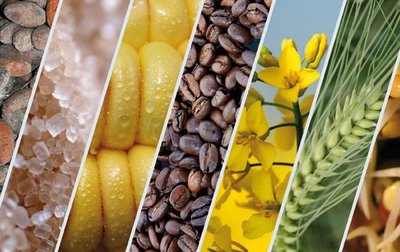What to look at when trading commodities during summer

Commodities, especially soft commodities, which are made up of agricultural produce are unique because they have a seasonality aspect involved. For example, agricultural produce is cheaper during harvest when there is increased supply and farmers are trying to offload their produce before it goes bad. This seasonality aspect should be something to consider when trading commodities during summer.
Some of the commodities to keep an eye on during summer include:
Soft commodities
While trading commodities during summer, soft commodities will be directly affected by the changes in season, and some of them are:
Wheat
The most common type of wheat produced is winter wheat, which accounts for a majority of all wheat production in the world. Winter wheat is harvested at the start of spring in the northern hemisphere, which is between June and September. During the first half of summer, from mid-May to mid-July, wheat prices will often drop as there is increased supply. The degree of the drop will depend on the harvest, of course, but wheat futures will always be cheaper during this time.

Later on, on the second half of the summer season, this is when the wheat will be planted, causing prices to go up. This is the time when speculators will start to price in various factors in growing conditions such as weather. These will make the price of wheat to rise especially if the markets assume there will be a worse harvest.
Soybeans
Soybeans are harvested from October to November, but their prices will rise through the summer months awaiting the harvest. Soybean futures contracts for the months of August and September will be higher priced as a result of uncertainty about the upcoming harvest. Therefore, you should place long orders on soybeans if you’re trading commodities during summer.
Corn
Harvest for corn can begin as early as mid-September, which is right about the end of summer in the US. Still, most of the harvest will take place in October after summer is over. As such, the price of corn starts to drop during the summer because the markets can already presume how much of a harvest there is going to be. By this time, there is no uncertainty, and you should begin short selling.
Other commodities
There are also indirect factors that affect non-agricultural commodities, and these should matter when trading commodities during summer. Oil prices, for example, will be higher in the summer due to increased traveling by air and road. Trading commodities during summer dictate that you should go long on crude oil. Natural gas will also be more expensive in the summer when more people are using air conditioning.
What to remember about trading commodities during summer
Even though there are clear patterns observed in the commodities markets by season, there are various other factors that come into play. As such, you should not base your trades only on the seasonal aspects, but remember to watch other issues. Another tip is not to wait until summer, but place your trades in anticipation for the summer movements. Placing orders as early as March can allow you to catch longer trends in the commodities markets and make better profits.


























Comments (0 comment(s))